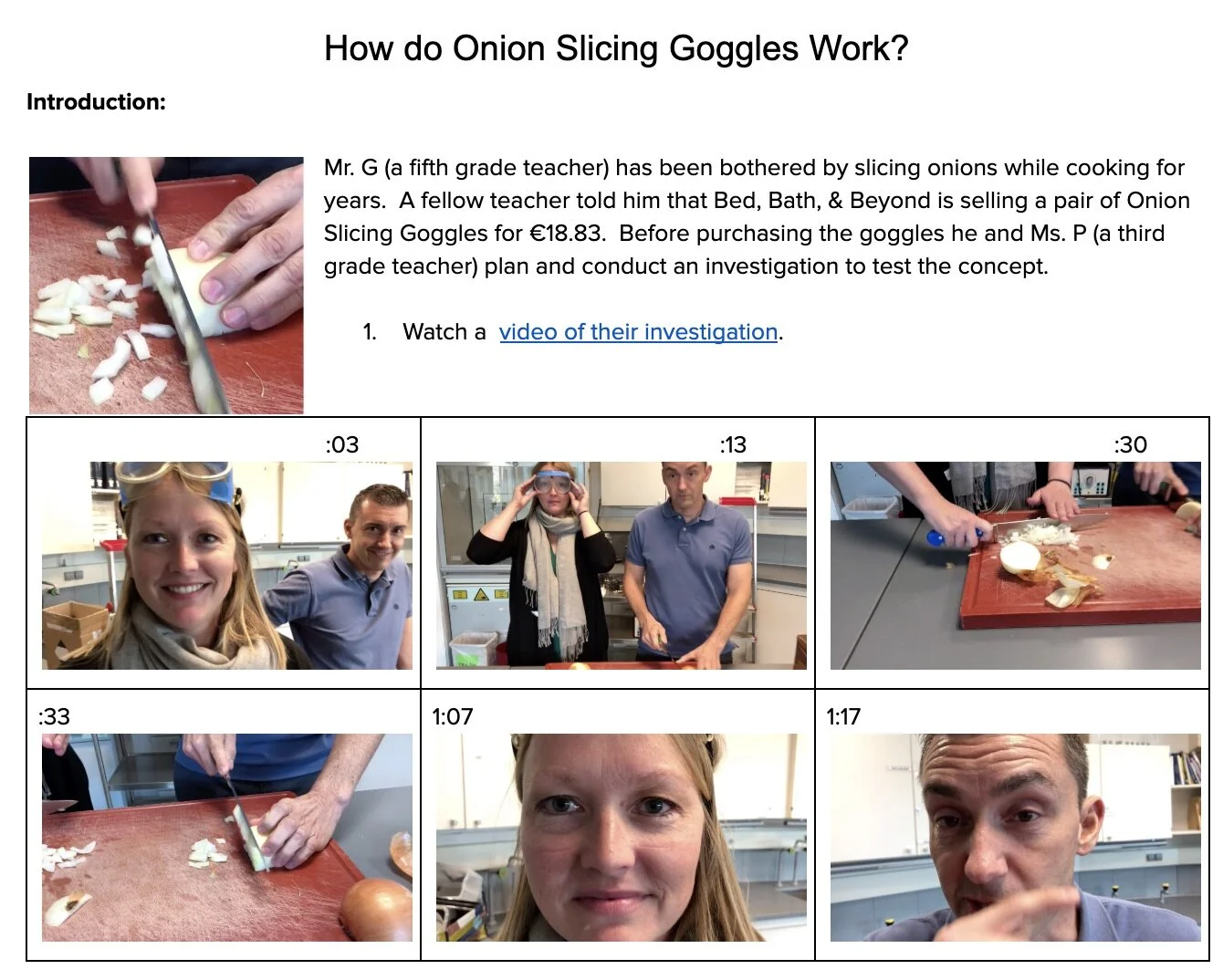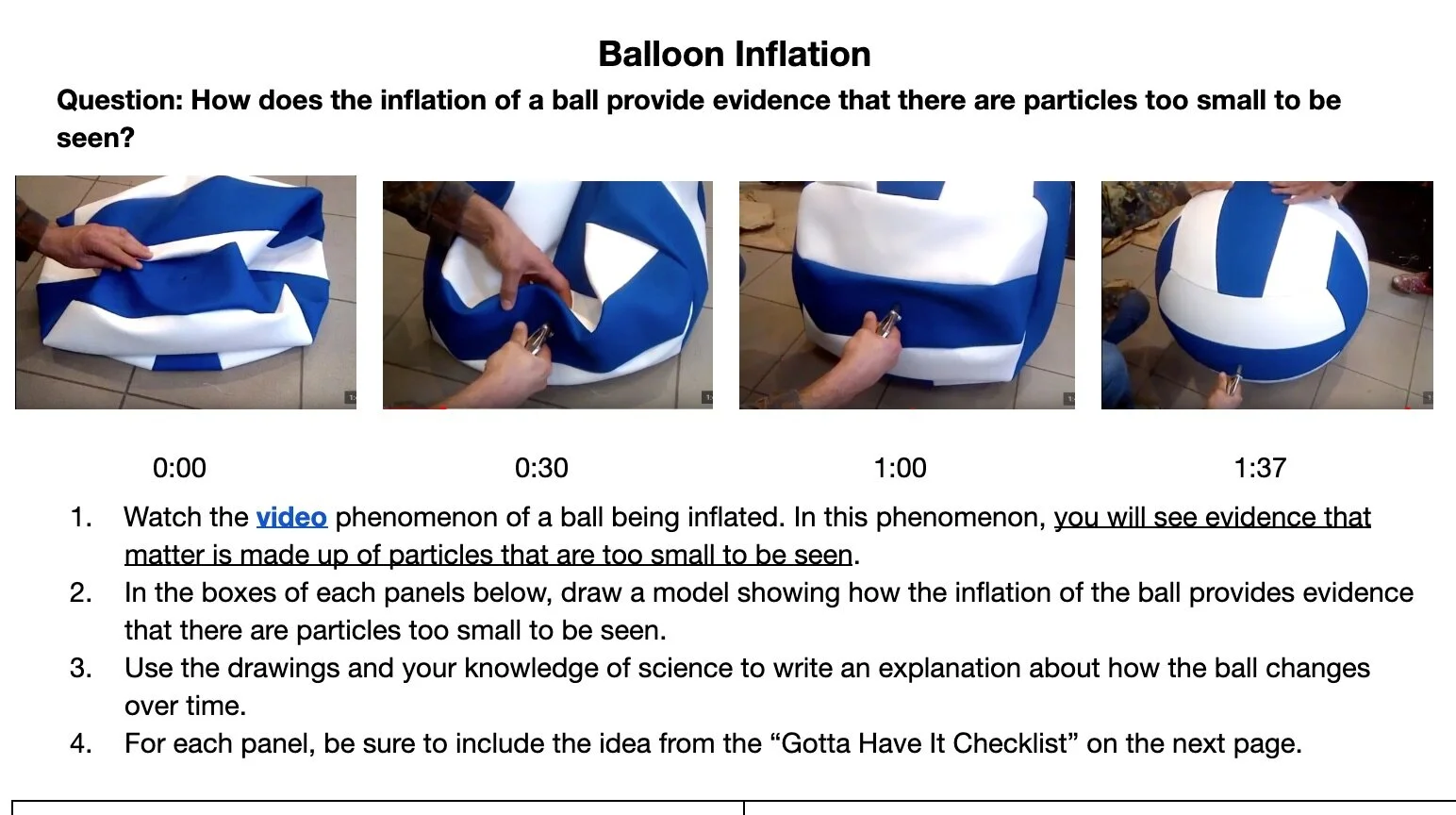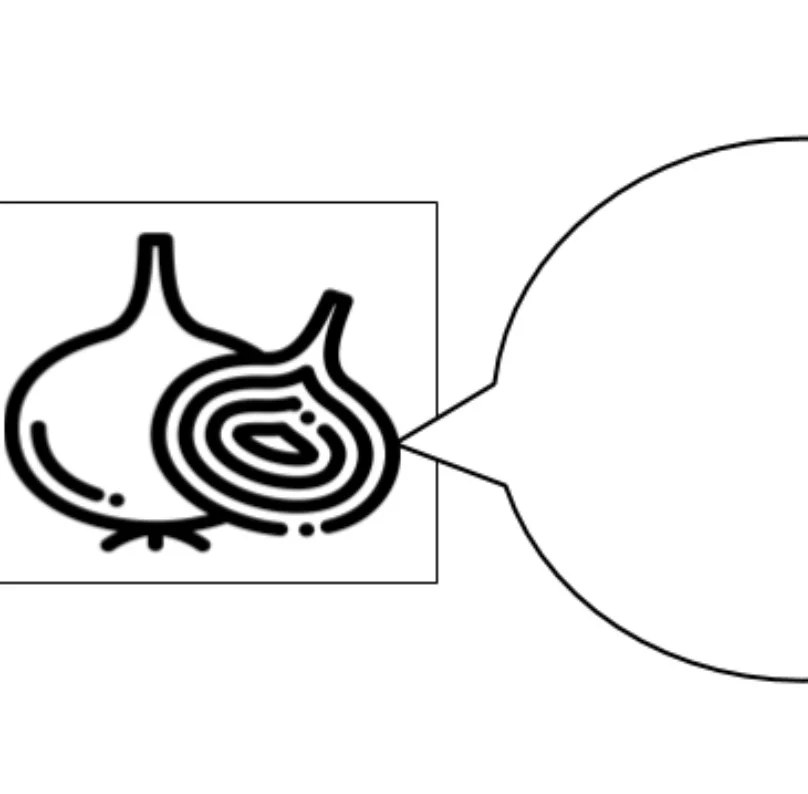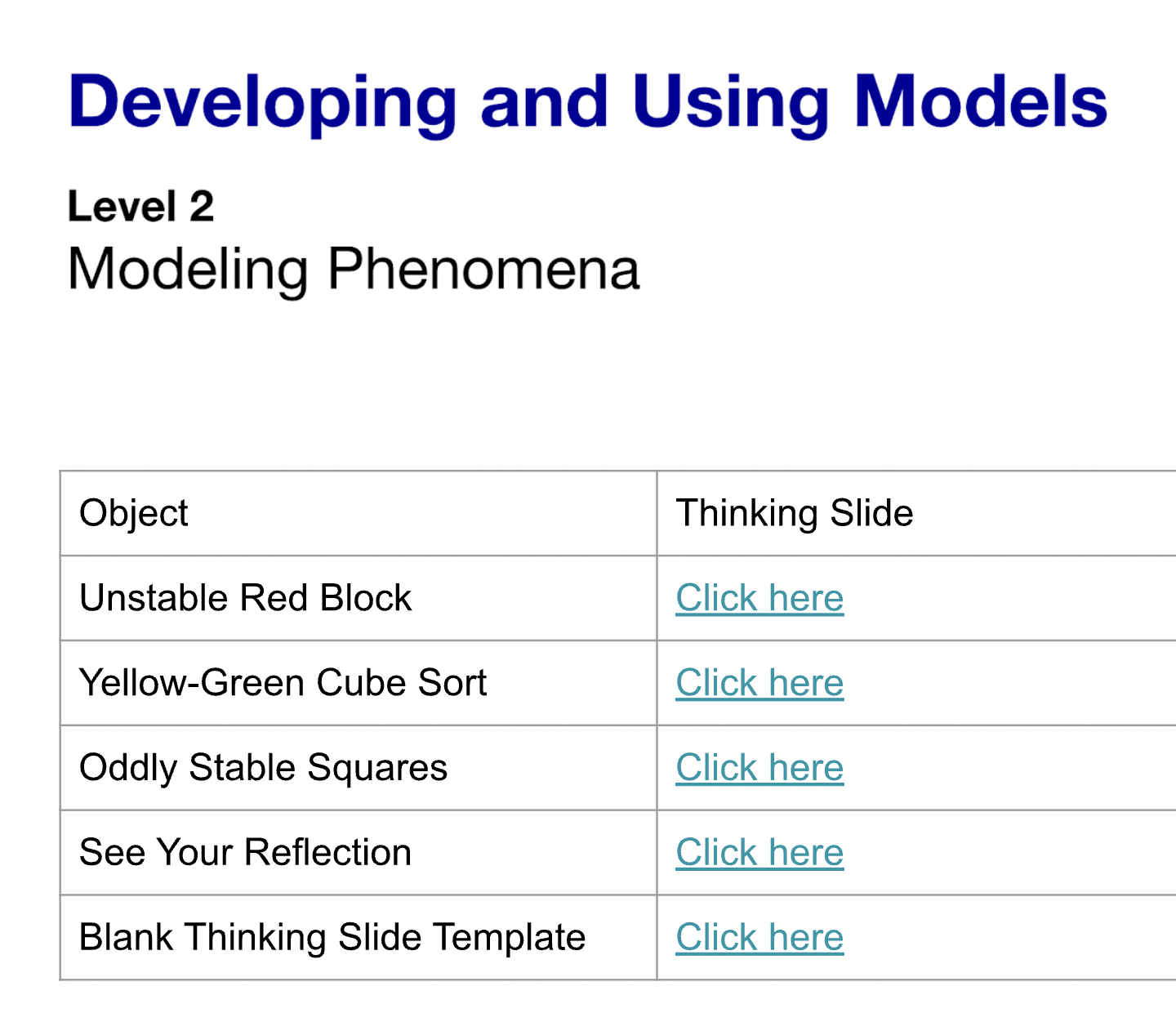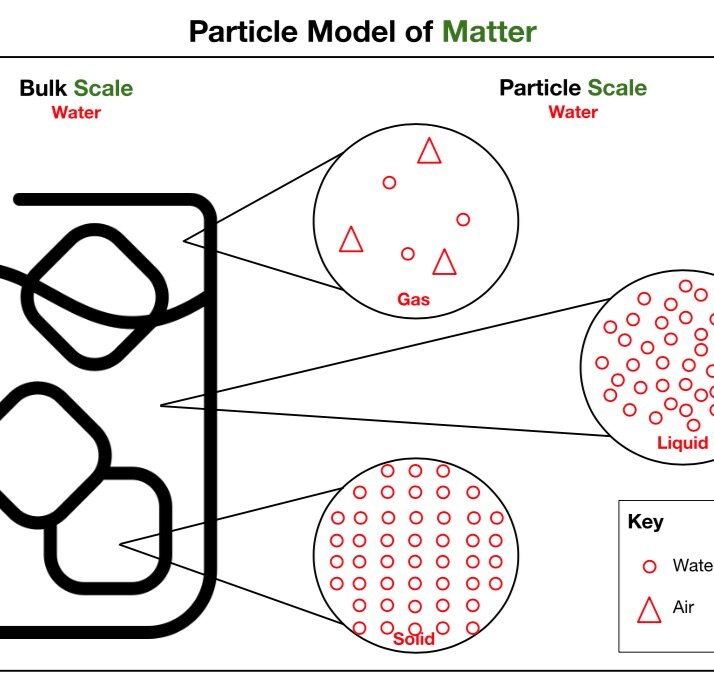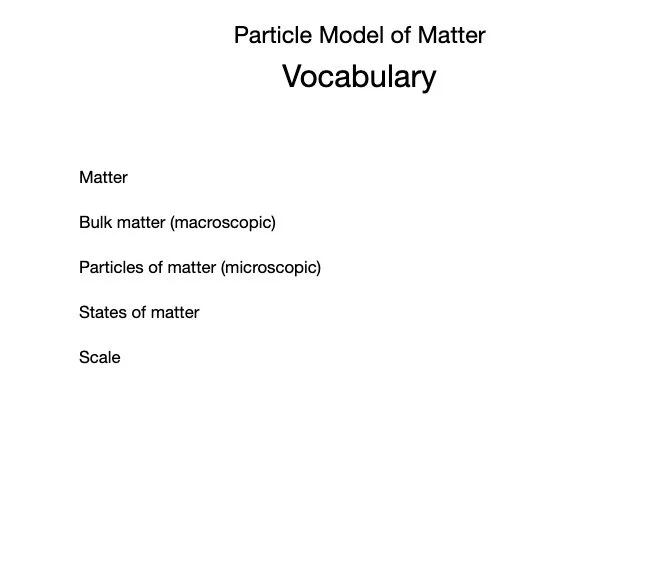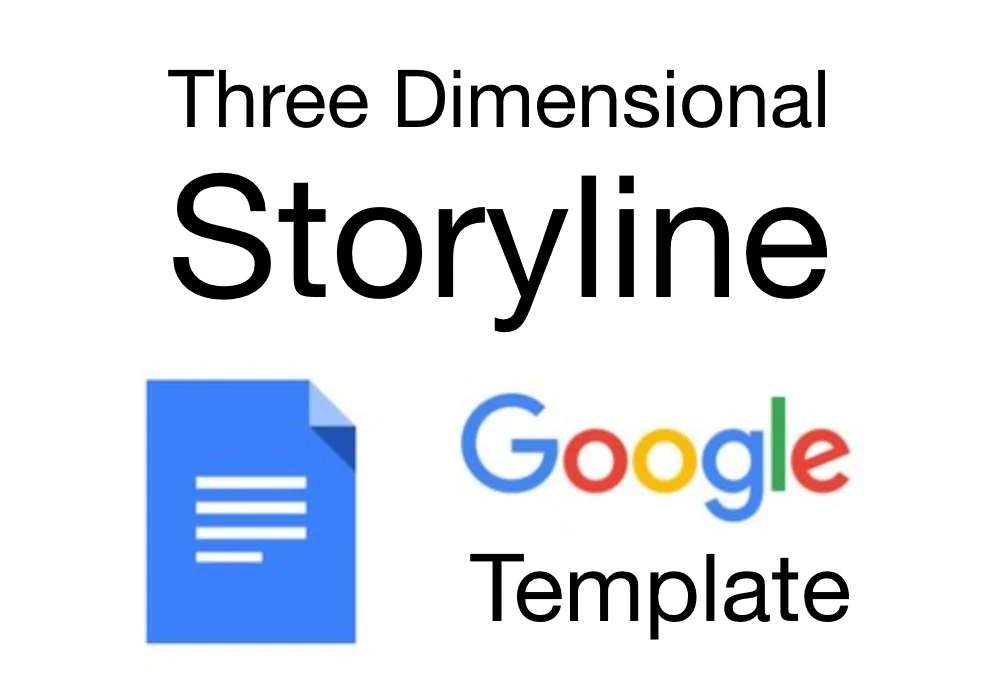5-PS1-1: Particle Model of Matter
Develop a model to describe that matter is made of particles too small to be seen. (Scale, Proportion, and Quantity)
Clarification Statement: Examples of evidence could include adding air to expand a basketball, compressing air in a syringe, dissolving sugar in water, and evaporating salt water.
Assessment Boundary: Assessment does not include the atomic-scale mechanism of evaporation and condensation or defining the unseen particles.
Science Practices
Developing and Using Models
Disciplinary Core Ideas
PS1.A: Structure and Properties of Matter
Crosscutting Concepts
Scale, Proportion, and Quantity
Assessments
The Wonder of Science Assessments
Shared Assessments
The following assessments were shared by teachers implementing the NGSS. Many of these are drafts and should be used accordingly. Feel free to improve these assessments or contribute your own. Learn more here.
Instructional Resources
Mini Lessons
The Wonder of Science Resources
Shared Resources
Anchor Charts
Phenomena
Videos
Lesson Plans
Storylines
Common Core Connections
ELA/Literacy
RI.5.7 - Draw on information from multiple print or digital sources, demonstrating the ability to locate an answer to a question quickly or to solve a problem efficiently.
Mathematics
5.MD.C.3 - Recognize volume as an attribute of solid figures and understand concepts of volume measurement.
5.MD.C.4 - Measure volumes by counting unit cubes, using cubic cm, cubic in, cubic ft, and improvised units.
5.NBT.A.1 - Recognize that in a multi-digit number, a digit in one place represents 10 times as much as it represents in the place to its right and 1/10 of what it represents in the place to its left.
5.NF.B.7 - Apply and extend previous understandings of division to divide unit fractions by whole numbers and whole numbers by unit fractions.
MP.2 - Reason abstractly and quantitatively.
MP.4 - Model with mathematics.
*Next Generation Science Standards is a registered trademark of Achieve. Neither Achieve nor the lead states and partners that developed the Next Generation Science Standards were involved in the production of this product, and do not endorse it. Visit the official NGSS website.




